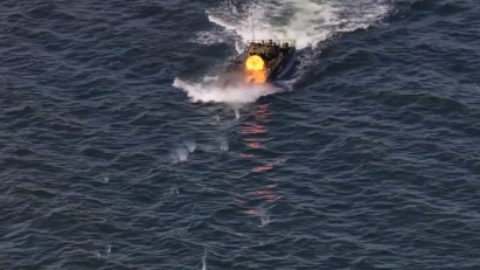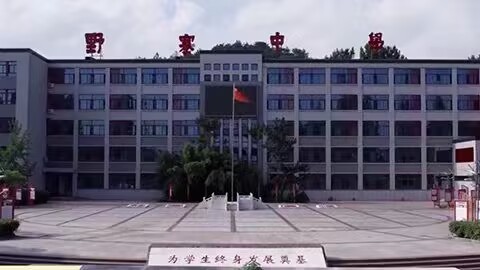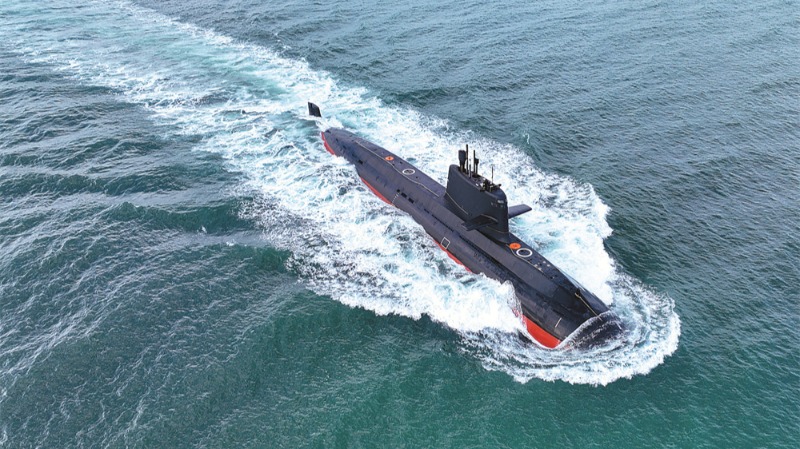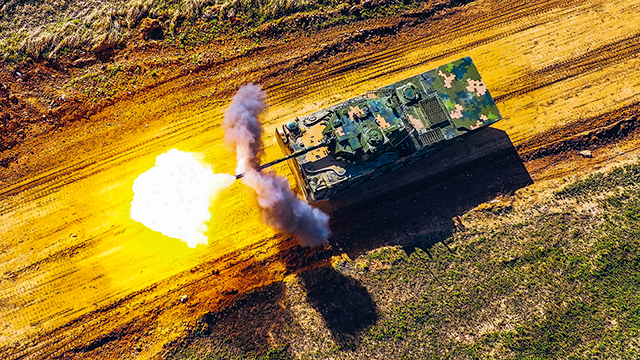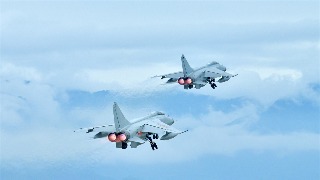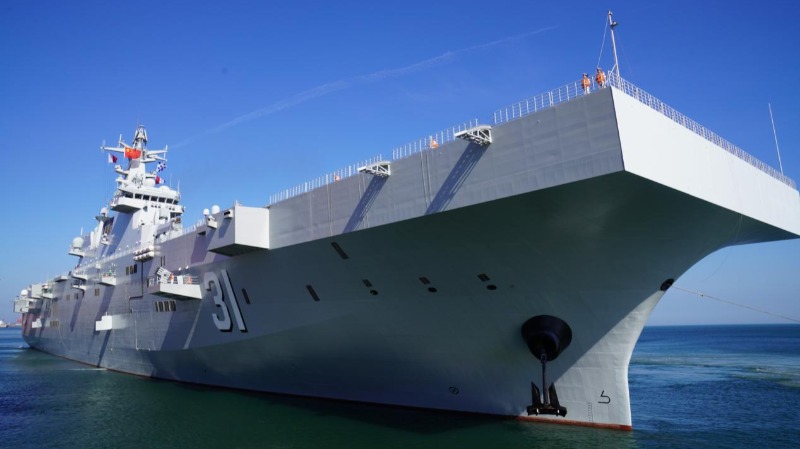By Jia Chunyang
贾春阳
It has been nearly two years since the Russia-Ukraine conflict started and continues to unfold. Since the outbreak of the conflict in February 2022, the US has persistently strengthened its military assistance to Ukraine. However, as the crisis drags on, some key government officials, top military brass and think tanks of the country began to frequently hype up their weapons and ammunition stockpile and defense production capacity deficiencies, claiming that the Ukraine crisis is rapidly depleting their arms repertories and that the highlighted US defense production capacity issue renders them incapable of effectively responding to other potential future military conflicts.
持续演进中的俄乌冲突很快就要满两年了。2022年2月冲突爆发以来,美国不断强化对乌军援。但随着危机延宕,美国府会部分要员、军方高层、智库等开始频繁炒作美军武器弹药库存和国防产能“不足”的问题,宣称乌克兰危机正在快速耗尽美国军备库存,而由此反映出来的美国国防产能问题也使其无法应对未来其他可能的军事冲突。
According to some remarks from the US, the country's deficiencies exposed in the process of military aid to Ukraine mainly cover the following aspects. First, the US arms inventories are said to be quickly bottomed out, but the deficit cannot be made up at the same pace due to inadequate defense capacity. For example, some US media reported that within the initial 10 months of the conflict, those Stinger air defense missiles, requiring a production time of 13 years, were exhausted, along with the Javelin anti-tank missiles, which typically take five years to manufacture. Second, the industrial nature of future major conflicts between major powers denotes the US' lack of readiness in its defense industry. Some analysts in the US say that the existing industrial base of the country is mainly dedicated to meeting peacetime demands but unable to quickly respond to wartime demand growth. If the US gets involved in major regional conflicts, it could raise the issue of ammunition consumption exceeding available stockpiles. Third, the US military's combat readiness and national defense capacity cannot cope with the so-called Taiwan Strait conflict. When clamoring the national defense capacity issue, the US strategic community deliberately linked it to the so-called Taiwan Strait conflict to hypothesize and exaggerate the conflict intensity, expressing grave concerns about their ability to handle such an intense conflict.
按照美国人的说法,美国在军援乌克兰过程中暴露的“不足”主要包括以下方面:一是美国军备库存“迅速见底”,但美国国防产能无法迅速补足缺口。比如有美媒报道说,乌克兰战事前10个月就用掉了美国耗时13年才能生产出来的“毒刺”防空导弹和耗时5年才能生产出来的“标枪”反坦克导弹。二是未来的大国冲突将是工业式冲突,美国国防工业准备不足。美国国内一些分析人士称,美国现有工业基础主要聚焦满足和平时期需求,但无法快速应对战时的需求增长。如果美国参与重大地区性冲突,可能引发弹药消耗量超过库存的问题。三是美军战备态势和国防产能无法应对“台海冲突”。美国战略界在炒作国防产能问题时,刻意与所谓“台海冲突”挂钩,臆测和渲染冲突烈度,称对美国能否应对一场如此烈度的冲突“充满担忧”。
However, these concerns from the US are obviously contradictory to the global perception of the country's world top-ranked military and defense industrial strength, and are also inconsistent with the superior military power status previously strutted by it.
但美国人的这些“担忧”明显有悖于国际社会对美国军事和国防工业实力“世界第一”的印象,也与美国此前炫耀的“超强军力”不符。
Early in World War II, the US had already been capable of lending and selling huge armaments to the UK, the Soviet Union, and other countries while satisfying its own needs. The US defense industry has maintained a position of considerable strength. It was reported that up to 40 companies in the US were on the list of the world's top 100 military companies in 2021, whose sales volume accounted for about 51% of the total amount of all these companies. Arms exports, in particular, can reflect a country's defense industry strength. According to a report by the Swedish Stockholm International Peace Research Institute (SIPRI), the US arms exports increased by 14% and the relevant global share rose from 33% to 40% from the period 2013–2017 to the period 2018–2022, far exceeding those of other countries. The US military assistance to Ukraine also demonstrates the rapid response and capacity expansion capabilities of the country's defense industry. As was shown in the list of security assistance to Ukraine released by the US Department of Defense (DoD) in October 2023, the US had cumulatively provided huge security aid worth USD 43.9 billion to Ukraine since the outbreak of the Russia-Ukraine conflict. In terms of firepower, hundreds of thousands of various types of artillery shells and even hundreds of millions of light weapon ammunition were prominently included.
早在二战时期,美国就不仅充分满足美军自身需求,还向英国、苏联等租售大量军备。如今美国国防工业依然实力雄厚。有数据显示,2021年全球百强军工企业排行榜中,美国企业多达40家,这40家美企当年销售额又占全球百强军工企业销售总额的约51%。军火出口尤其能够反映一个国家的国防工业实力。瑞典斯德哥尔摩和平研究所报告显示,较之2013—2017年间,2018—2022年间美国军火出口增长14%,所占全球份额从33%升至40%,远超其他国家。美国对乌军事援助也体现出美国国防工业的快速反应和扩产能力。美国防部去年10月发布的对乌安全援助清单显示,俄乌冲突爆发后美国已累计向乌克兰提供了439亿美元安全援助。具体火力方面,动辄数十万发各类炮弹甚至数以亿计的轻武器弹药等赫然在列。
In other words, the US defense industry is by no means as incapable as some individuals in the country assert. Besides, the US is constantly seeking greater interoperability with its allies in respect of armaments to quickly acquire urgently needed equipment during wartime. In this case, why do the US political, military, and strategic circles frequently disclose their shortcomings?
也就是说,美国国防工业绝非美国一些人自称的那样不堪。而且美国还不断寻求与盟友加强军备方面的互通性,以便战时能够快速获取急需装备。既然如此,美国政界、军界和战略界为何频繁传出自曝“短板”的声音呢?
Firstly, the claimed arms supply inadequacy of the US in the context of continuous massive military aid to Ukraine features temporality and specificity. To save costs and safeguard their own commercial interests, the US military enterprises usually maintain their production capacities at a low level that is enough to meet the peacetime military needs of the country. In fact, military enterprises in other countries also face the same problem and choice and won't sustain an excessively robust defense industry capacity in peacetime. Otherwise, it would be economically unsustainable. Therefore, the so-called inadequacy does not indicate the weakness of the US defense supply capacity, but only shows that the US has underestimated the intensity of the Ukraine crisis, resulting in the consumption of inventory outpacing the demands of the conflict.
首先,美国在持续大量对乌军援背景下的“军备供应不足”具有临时性和特殊性。通常在和平时期,美国军工企业为节约成本、维护自身商业利益,会将产能维持在较低水平,能够满足美军平时需求即可。事实上,其他国家军工企业也面临同样的问题和选择,和平时期都不会维持过于强大的军工产能,否则在经济上无法持续。因此,这种所谓“不足”并不意味着美国的国防供应能力有多“弱”,只能说明美国一时低估了乌克兰危机的烈度,导致库存消耗跟不上乌克兰战事需求。
Secondly, as there are indeed certain persistent problems within the US defense industry, the country intends to seize the opportunity to address these weaknesses and stimulate the national defense industry. The US is working to solve the problems including fewer choices of arms procurement caused by intensified industry monopoly, low self-sufficiency rate of some key raw materials, gaps between ammunition stocks and production capacity and demands in case of large-scale wars, and serious turnover of highly skilled labors in the defense industry. The State of Competition within the Defense Industrial Base report released by the DoD in February 2022 urged relevant departments to jointly take measures to strengthen anti-monopoly supervision, improve intellectual property policies, attract more small and medium-sized enterprises to enter the defense industry and reduce external dependence of the defense industry supply chain. The DoD FY2024 budget includes USD 30.6 billion purchase fees for missile and other ammunition, growing by 12% from FY2023 and 50% from five years ago. All similar measures aim at providing impetus for the development of the US defense industry.
其次,美国国防工业确实存在一些痼疾,自曝“短板”有趁机补足短板、刺激国防工业之意。对于行业垄断加剧导致的军备采购选择余地小、部分关键原材料自给率低、弹药库存和产能无法迅速满足大规模战争的战时需求、国防工业高技能劳动力流失严重等问题,美国正在着手加以解决。美国防部2022年2月发布的《美国国防工业基础竞争状况》报告要求相关部门联手采取措施,加强反垄断监管、完善知识产权政策、吸引更多中小企业进入国防工业、减少国防工业供应链对外依赖等。美国防部2024财年预算案中将306亿美元用于导弹和其他弹药采购,比2023财年增加12%,与5年前相比增加50%,类似措施都是旨在刺激美国国防工业发展。
Thirdly, the US' self-disclosure of shortcomings also targeted at strengthening military preparations for future conflicts between major powers. The combination of bloating the so-called potential Taiwan Strait conflict and the "China military threat theory" further exposes that the country is possibly actively engaged in bolstering their military readiness in anticipation of future conflicts between major powers, especially those military conflict scenarios related to China. One-third of the ammunition budget is occupied by the long-range firepower in the DoD's FY2024 budget, which was bluntly stated by the US Deputy Secretary of Defense Kathleen H. Hicks to deter China. The US' website Defenseone.com also commented that most of the funds in this budget are not used to replenish weapons provided to Ukraine, but to increase the inventory of newer and more advanced missiles specifically designed to counter China.
第三,美国自曝“短板”还有着眼未来大国间冲突强军备战之意。美国自曝“短板”的同时又将之与潜在的所谓“台海冲突”挂钩,渲染“中国军事威胁论”,进一步暴露其可能正着眼未来大国间冲突特别是中美之间可能的军事冲突场景进行强军备战。在美国防部2024财年预算案中,弹药预算的1/3是远程火力,美副防长凯瑟琳·希克斯更是直言此举“意在威慑中国”。美国“防务一号”网站还评论称,美国防部2024财年预算中的大部分资金并非用于补充提供给乌克兰的武器,而是用于增加专为对抗中国而设计的更新、更先进导弹的库存。
It can be seen that although the US complains that its defense industry deficiencies have been revealed in the Ukraine crisis, it does not mean that the country's defense supply capacity has genuinely diminished. Serious misjudgments will arise from underestimating the US defense industry's supply capacity and rapid production expansion capacity in wartime, as well as the equipment interoperability and complementarity between the US military and its allies, from the perspective of their self-identified shortcomings. On the contrary, the measures they have taken to address these self-proclaimed so-called shortcomings, as well as their strategic schemes to boost the defense industry and engage in robust military preparedness targeting potential future conflicts between major powers, merit special attention.
由此可知,美国虽然抱怨自身国防工业在乌克兰危机中暴露出“不足”,但这并不能说明美国国防供应能力真正变弱。因为美国自曝“短板”而低估美国国防工业的供应能力,低估美国国防工业战时的快速扩产能力以及美军与盟友间的装备互通互补能力等,都将造成严重误判。恰恰相反,美国在自曝所谓“短板”后为补足“短板”而采取的诸多措施,以及美国借机瞄准未来大国间可能的军事冲突场景而提振国防工业并强军备战的战略图谋,倒是值得特别关注。
(The author is the executive director of the Center for Economic & Social Security Studies and an associate research fellow of the Institute of American Studies at the China Institutes of Contemporary International Relations.)
(作者是中国现代国际关系研究院经济与社会安全研究中心执行主任、美国所副研究员)
Editor's note: Originally published on huanqiu.com, this article is translated from Chinese into English and edited by the China Military Online. The information and opinions in this article do not necessarily reflect the views of eng.chinamil.com.cn.







